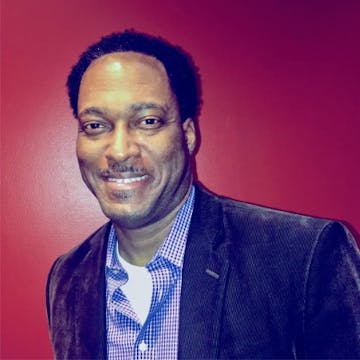Skip to content
Share
Explore

 Theme 1: Heirs of Our Ways
Theme 1: Heirs of Our Ways
This guide outlines resources for Theme One of the Honors College Program Guide
By Dr. Patricia D. Hall
Honors Program Council, Phi Theta Kappa Honor Society
The United Nations Educational, Science, and Cultural Organization (UNESCO) in The Convention on the Rights of the child (1995) proposed a world in which “each child should grow up in a family environment, an atmosphere of happiness, love, and understanding,” and they “should be fully prepared to live an individual life in society brought up in the spirit of peace, dignity, tolerance, freedom, equality, and solidarity.” UNESCO’s proposed world contrasts with that of detained migrant children on the United States-Mexico border, sex workers in India, child waste pickers worldwide, and children with lead-based brain damage in Flint, Michigan.
Current science corroborates the UNESCO vision: children thrive in loving, long-term, reciprocal relationships with family, caregivers, teachers, and peers. At birth, the human brain is twenty-five percent of its adult size, and it grows to Eighty-five percent by age three. The corpus callosum achieves its maturity in a person’s mid-twenties. For children to grow optimally, they need access to challenging and safe experiences in stable communities as well as access to education, healthy food, air, and water. If all goes well, children become self-motivated, happy, productive members of their communities.
Clarkson, Morrisette, and Régallet (1992) note that traditional indigenous cultures view the rights of the child differently from prevailing western cultures. Their beliefs emphasize that the survival of the group is tantamount and that everyone has a unique contribution to make to society. While indigenous cultures recognize children have unique needs for protection and support, children are incorporated into collective work as their skills and abilities grow. By contrast, western cultures emphasize the satisfaction of material wants, and that stress on material wants may have led to increasingly consumer-oriented societies. In the West, nuclear families are the norm, and day-to-day life includes measures of competition for scarce resources among and within family units.
With the mechanisms of the state and the market geared toward production and accumulation, according to Clarkson, Morrisette, and Régallet, the fulfillment of individual needs, is the measure of success. As the global population adopts this western definition of success, a variety of implications for childhood have emerged. Census data from The Opportunity Atlas shows that where children are born makes a difference in their lives. Zip codes establish a geofence that identifies socioeconomic status and creates a predictor of major life outcomes. Projected lifespan, income, incarceration rate, and college graduation can all be affected. Infant mortality for non-Hispanic Blacks in the United States, for example, is on par with conflict zones in Syria and the West Bank. For a variety of reasons, child and adolescent mental illness, along with suicide rates, is increasing.
With urbanization and regional mobility, infants and children experience institutional care outside the home in a consumer-funded system that emphasizes access over quality. The capacity for us to improve major life outcomes for children is strong. Industrialized countries, including Sweden and New Zealand, have invested in community-supported early education and family programs. Genetic modification promises the potential to eliminate common childhood diseases. Technology in education allows individualization that supports creativity and innovation. Teens, like Swedish environmental activist Greta Thunberg, and Parkland High School gun control activist David Hogg, have high levels of resilience and continue to thrive in the face of adversity. “Dreamers” show the grit necessary to navigate the immigration system that also serves them well in education systems and workplaces.
From ancestors, we have inherited wisdom and problems to solve before they are passed to our children and future generations. We can learn by listening to lessons shared by experts in neuroscience, child development, cultural anthropology, technology, and trauma-informed family support systems to create healthy communities in which children thrive. What legacy will we leave children? How can we ensure our legacy creates opportunities for all our children to flourish in ways that allow them to leave a brilliant legacy for the seventh generation?
Reading Resources
Aldy, J. E. (2016). Mobilizing political action on behalf of future generations. The future of children, 26(1),
Aldy analyzed current efforts to fight climate change at a national and global level, and how our failure to
mobilize sufficient effort will affect future generations. He suggested linking climate change with other issues that affect children to potentially diminish political opposition.
Copeland, W. E., Shanahan, L., Hinesley, J., Chan, R. F., Alberg, K. A., Fairbank, J. A., van den Oord, E. J. C. G.& Costello, E. J. (2018, November 9). Association of childhood trauma exposure with adult psychiatric disorders and functional outcomes. JAMA Network Open (7), 1-11. Retrieved from
Copeland and his colleagues shared highlights of their longitudinal study about the lifelong consequences of childhood trauma.
Darling-Hammond, L. (2017). Teacher education around the world: What can we learn from international
practice? European Journal of Teacher Education, 40(3), 291-309. Retrieved from
Darling-Hammond surveyed varied global education movements to find practices that can be used to best educate children to thrive in the world.
Gopnik, A. (2009). . New York, NY: Farrar, Straus and Giroux.
Gopnik explained the cutting-edge scientific and psychological, neuroscientific, and philosophical
research that has revealed that babies learn more, create more, care more, and experience more than we could ever have imagined.
Lally, R. (2013). . New York, NY: Teacher’s College Press, Columbia University.
Lally examined the needs of babies and their families and the effects of U.S. policies on children’s brains, behavior, and learning capacities.
Want to print your doc?
This is not the way.
This is not the way.

Try clicking the ⋯ next to your doc name or using a keyboard shortcut (
CtrlP
) instead.